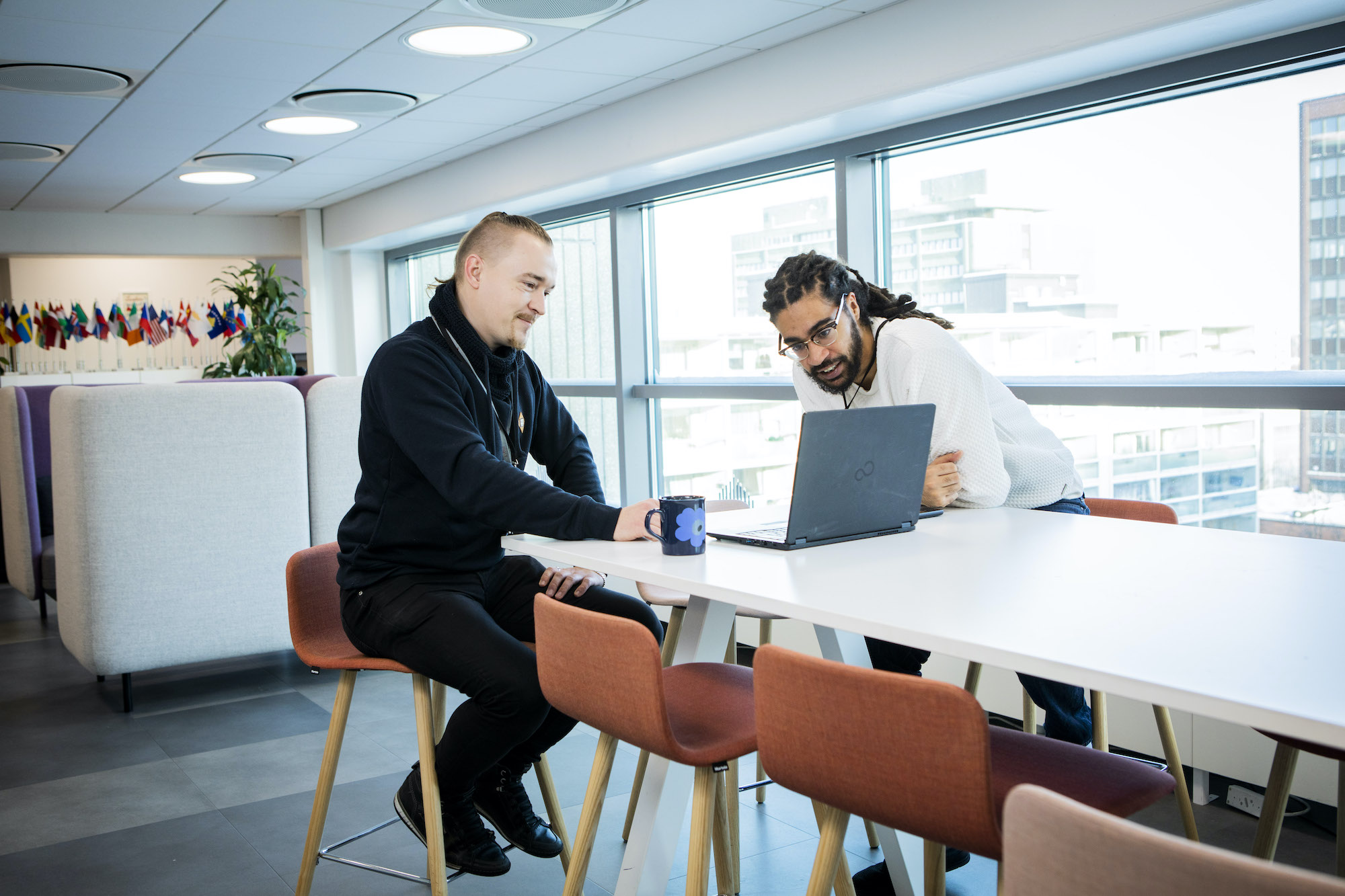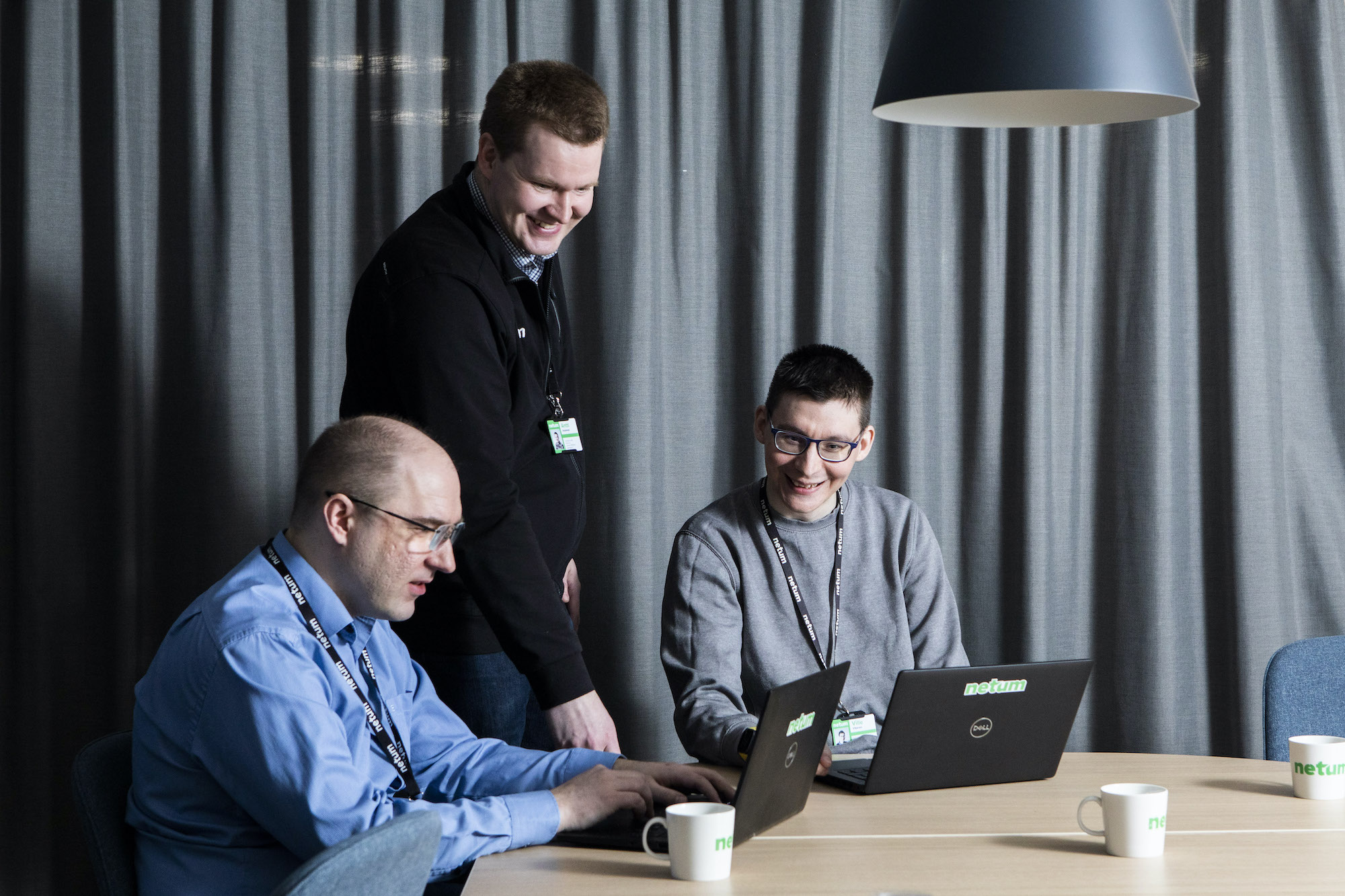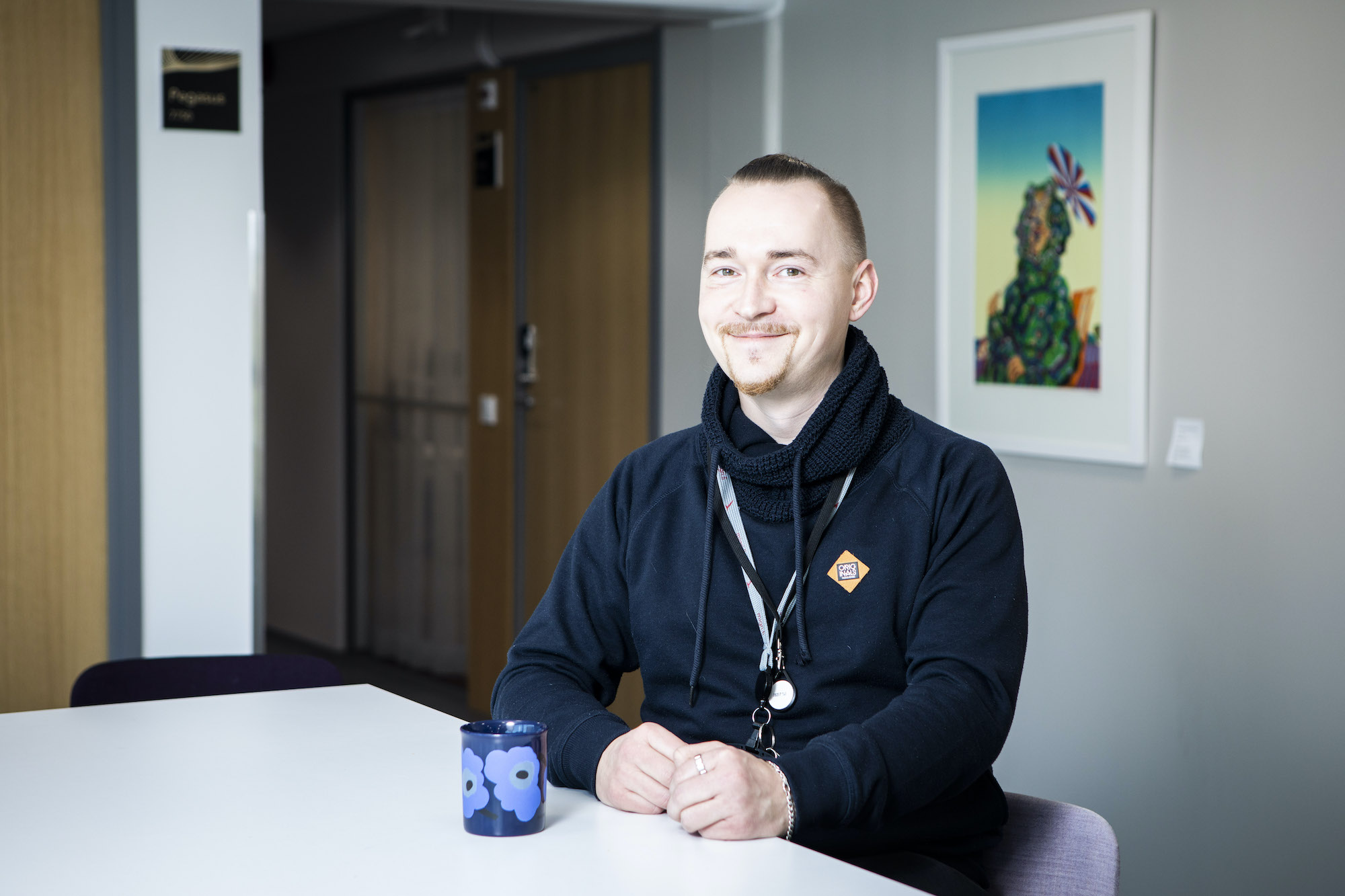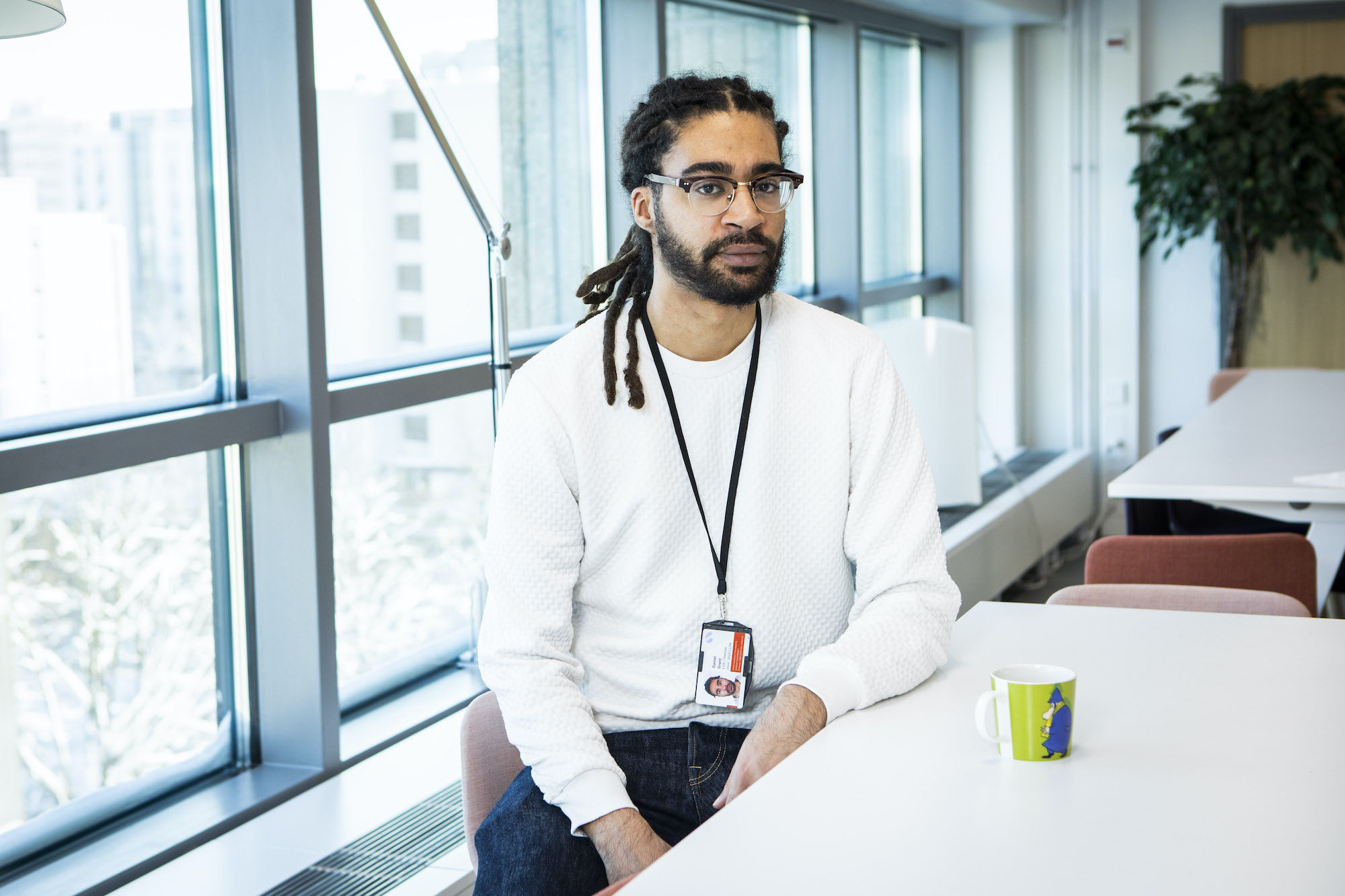 The Finnish Immigration Service's new Tellus system has provided Tomi Jääskeläinen (left) and Daniel Grant with breathing space by reducing routine work.
The Finnish Immigration Service's new Tellus system has provided Tomi Jääskeläinen (left) and Daniel Grant with breathing space by reducing routine work.
Optimizely-based Country of Origin Information (COI) portal streamlines the everyday activities of the Finnish Immigration Service
The Finnish Immigration Service’s Tellus COI portal serves as a key source of information for various parties, who need up-to-date information on immigrants’ countries of origin for decision-making purposes. The system has been completely revamped using Optimizely (previously Episerver) technology, which enhances content management. The new, state-of-the-art Tellus portal will greatly streamline the work of researchers, decision-makers and the system management team.
It includes a growing amount of information, produced by researchers from the Finnish Immigration Service, on matters such as the political and humanitarian situation and safety in countries of origin. The aim was to create a system in which information could be found easily and was easy to use.
A prime example of streamlining is the handy ‘query’ function that enables decision-makers to approach researchers on issues to which they lack a ready answer. The researchers’ answers are added to the content of Tellus.
The new system displays the stage the query has reached, and enables dialogue between the enquirer and researcher. This eliminates intermediaries, reshaping the collaboration flow between decision-makers and the COI service. “Before, we had to pass on a lot of information manually,” says Daniel Grant, a Planning Officer at the Finnish Immigration Service.
The public interface of the new Tellus provides large numbers of users with limited access to information produced by the Finnish Immigration Service. It serves groups such as journalists who need access to the latest public reports.
Optimizely provides high service availability and better content management
Introduced almost 20 years ago, the Finnish Immigration Service’s old Tellus system had begun to show its age. Certain operating models and data were migrated from the old system according to the needs of the Finnish Immigration Service and Netum's Legacy to Digi practices. The new Tellus portal was built almost entirely from scratch.
Optimizely technology, which provides functional content management tools, was chosen as the base. This saved working time, because Optimizely's features were already fit for purpose and could be expanded immediately to meet the wishes of the Finnish Immigration Service.
Due to its high number of users, Tellus has to be based on high-performing, intuitive technology. Users find the Optimizely-based system intuitive, and it provides more freedom to edit and manage content.
“In terms of maintenance, we can do much more with the new system, such as adding publishers and keywords. This was an important goal, which was achieved,” says Tomi Jääskeläinen, one of the Finnish Immigration Service's planning officers involved in the project.
The project began with the big picture
At the start of the project, detailed account was taken of the Finnish Immigration Service's practices and processes, as well as its system needs. Jääskeläinen and Grant appreciate the fact that an overall picture of system needs was obtained before work began on the tool.
“It was clear from the beginning that Netum’s experts grasped the issues very quickly. The Finnish Immigration Service works in a very specific field, but Netum’s people needed almost no time at all to understand our themes and needs,” Jääskeläinen says.
Because the Tellus system contains confidential information, a high level of data security was needed for the development project. Confidentiality commitments and security clearances were completed before the project began. The development team lacked direct access to the old system, the necessary information being transferred through busy meetings.

Jarno Rostedt (left), Antti Arpiainen and Ville Viljanen of Netum explored the activities and needs of the Finnish Immigration Service in detail at the start of the project.
Working smoothly and agilely together
Development was based on an agile Scrum model, with demos being created at a fast pace, feedback being collected, and changes of course being made where necessary. The project progressed in two-week sprints, between which achievements, future steps and the direction of development were examined together. Grant and Jääskeläinen praise the relaxed and flexible cooperation with Netum, which was based on clear roles and a highly approachable project team.
“It felt like I was working with colleagues. There is a low threshold to contact, and nothing was left undone or unexplored due to being afraid to ask,” Grant comments.
The Government ICT Centre Valtori is managing the technical infrastructure during the project, as well as details related to the Government Security Network (TUVE). Close cooperation between the Finnish Immigration Service and Netum will continue in the form of application maintenance.
-

“The Finnish Immigration Service’s operations and COI system involve specialist terminology and processes which the Netum team mastered very quickly,” says Tomi Jääskeläinen.
-

”The project progressed in a highly relaxed manner. Netum had drawn up a project plan which was then executed, with no need to reconsider issues. The Netum team did the work, we provided comments and the system was completed under its own momentum,” says Daniel Grant.
HOW TO BEGIN A MAJOR SYSTEM REFORM SMARTLY — DANIEL GRANT AND TOMI JÄÄSKELÄINEN GIVE TIPS
1. Assemble a comprehensive project team whose members have clear roles. Identify people in your organization who understand your key needs and functions. “However, keep the team relatively small to avoid pointless tinkering.”
2. Start by focusing on key features and go into more detail as the project progresses. “Don't spend too long on planning, but feel free to get started when the key issues are clear."
3. Use previous, successful projects as a model, but keep an open mind and reasonably critical attitude. “List what you need to retain from the old systems and leave out whatever doesn't work."